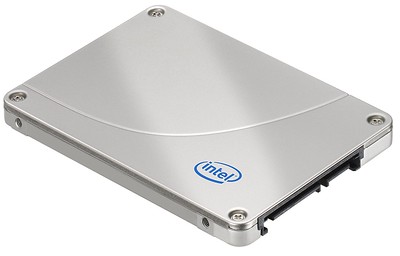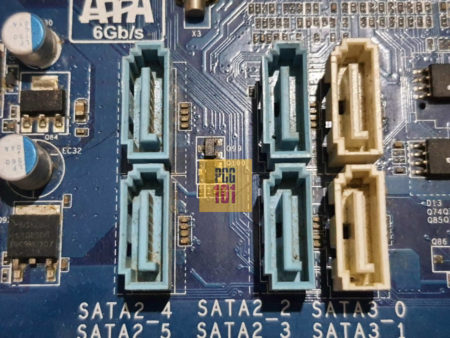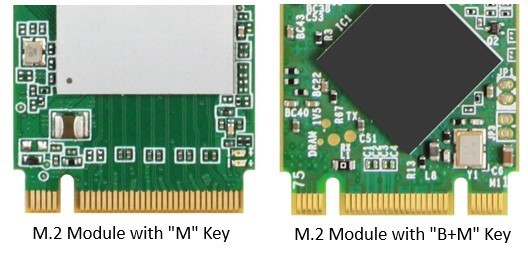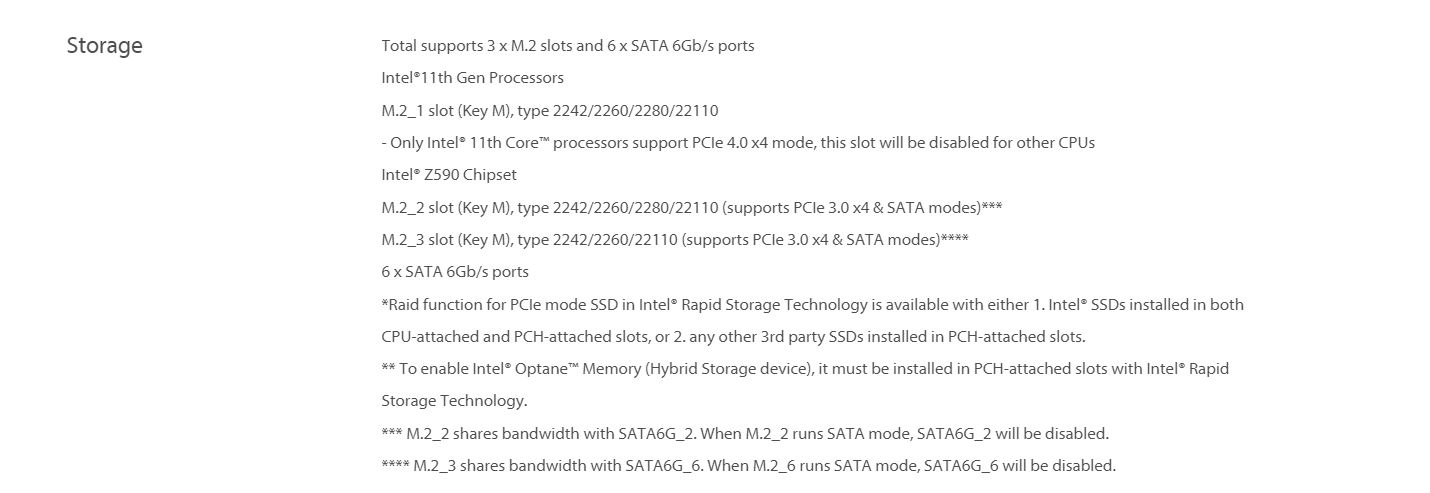If you plan on buying a new SSD, it is important to learn how to check SSD compatibility with your laptop or desktop motherboard to avoid purchasing something that doesn’t work.
To check the compatibility of a specific SSD with your PC, refer to its motherboard’s technical spec sheet. However, you must understand what they mean by understanding the jargon in the spec sheet.
To successfully understand the SSD compatibility through the technical spec sheet, you need to know the following:
- The two SSD interfaces, i.e., SATA and PCIe
- The three different types of SSD, i.e., 2.5″ SATA SSD, M.2 SATA SSD, and M.2 NVMe SSD
- The Sizes And Key Types for M.2 SSDs
- The Impact of the Interface Version on the SSD
Once you understand these concepts, buying the right SSD for your laptop or desktop will be easy.
I will discuss the SSD technical jargon and ideas in detail in the text below.
TABLE OF CONTENTS
SATA vs. PCIe Interface for SSDs
The first step in understanding how to check SSD compatibility with a laptop or desktop is to understand the different types of interfaces for SATA.
There are essentially two interfaces that SSDs are built for:
- SATA
- PCIe
SATA SSDs
SATA is a slower interface typically used to connect hard disk drives.
The newest version of the SATA interface, SATA 3, works at 6 Gbps (Giga BITS per second) or 750 MBps (Mega BYTES per second) transfer rate (theoretically).
Practically, SATA SSDs can reach speeds of about 550 MB/s. This is about 2-3 times faster than a standard hard disk drive.
PCIe SSDs
The PCIe interface, on the other hand, is much faster. PCIe interface uses PCIe lanes. PCIe lanes are like information highways that quickly carry data from the connected devices to and from the CPU.
There are various versions of the PCIe interface. The most current PCIe version is 4.0. PCIe-based SSDs are also called NVMe SSDs. A PCIe 4.0 SSD can reach speeds of a whopping 5500 MB/s practically!
TL:DR: SATA SSDs are slower; PCIe SSDs (aka NVMe SSDs are faster.
Understanding the Different SSDs and Their Form Factor
Along with understanding the different interfaces SSDs use, you must also understand the form factors they come in to check SSD compatibility with laptops or desktops.
When you consider the form factors, you will end up with three common SSD types:
- 2.5″ SATA SSD
- M.2 SATA SSD
- M.2 NVMe/PCIe SSD
2.5″ SATA SSD

2.5″ SATA SSDs, as shown above, are similar to the 2.5″ HDD in size that you find in laptops.
To connect to the PC, they require a SATA Data cable that connects to the SATA ports, as shown below, on one end and to the drive on the other hand.

2.5″ SATA SSDs also require a SATA power cable from the Power Supply unit.
When connected to SATA 3 ports, these drives can achieve speeds of about 550 MB/s.
Also Read: What Cables Do I Need for SSD?
M.2 SATA SSD

SATA SSDs can also be found in the M.2 form factor. These drives have a stick-like form factor and go into your motherboard’s dedicated M.2 slots.
These two have a maximum speed of about 550 MB/s.
Also Read: How to Tell if My M.2 Slot is NVMe or SATA?
M.2 PCIe/NVMe SSD

PCIe SSDs, aka NVMe SSDs, are the gold standard for fast storage. NVMe SSDs also use the M.2 form factor.
Regarding performance, they are light years ahead compared to the SATA SSD.
A PCIe 3.0 NVMe SSD can reach a speed of about 3500 MB/s.
A PCIe 4.0 NVMe SSD can reach speeds of about 5500 MB/s – ten times as much as a SATA SSD.
Also Read: How Many M.2 Slots Do Motherboards Have?
Understanding the Key Type of M.2 SSDs
Another important specification to note to check SSD compatibility with your motherboard is the Key type.
Both the key on your SSD and the motherboard socket must match for the SSD to be compatible.
The key refers to the notch found on the connectors on the SSD sticks.
- NVMe SSD uses B Key; it offers 2 PCIe Lanes – not used nowadays.
- NVMe SSDs use M Key; offer 4 PCIe Lanes
- B+M Key is used by SATA SSDs typically.
You need to understand the two common key types are the M and B+M Keys.

A typical technical spec sheet for the SSD stick or the motherboard M.2 slot will undoubtedly mention the key they use.
An M Key is the standard for M.2 slots on the motherboard as it offers 4 PCIe lanes and is compatible with M Key NVMe SSD and SATA SSDs using the B+M.
M Key slots CANNOT be accommodated with a B Key SSD and vice versa.
A B+M Key for M.2 slots on the motherboard offers the best compatibility as it can support both M, B, and B+M Key SSDs. The only issue with a B+M key slot on the motherboard is that it offers 2 PCIe lanes.
Key Type of the M.2 Slot and PCIe Lanes
A typical M.2 NVMe SSD requires x4 PCIe lanes to work optimally. However, specific M.2 slots on the motherboard (those using B and B+M Key) offer 2 PCIe lanes. This can reduce the speed of the installed NVMe SSD by half!
In other words, if you have a Gen 4 PCIe NVMe installed in a B+M key slot, its performance would be reduced by half!
Also Read: Are All Hard Drives Compatible with All Motherboards?
Impact of Interface Version on SSD
The version of the SATA port or the M.2 slot on the motherboard plays a massive role in what generation of SSDs it can support and how they will perform.
Both SATA and PCIe double their transfer speed with each newer generation.
As such:
- SATA 1 has a transfer speed of 1.5 Gbps or 187.5 MB/s
- SATA 2 has a transfer speed of 3.0 Gbps or 375 MB/s
- SATA 3 has a transfer speed of 6.0 Gbps or 750 MB/s
Similarly, the transfer speed is shown in the table below for PCIe. Again, know that NVMe SSDs use x4 lanes.
| Version | x1 (GB/s) | x2 (GB/s) | x4 (GB/s) | x8 (GB/s) | x16 (GB/s) |
|---|---|---|---|---|---|
| 1.0 | 0.250 | 0.500 | 1.000 | 2.000 | 4.000 |
| 2.0 | 0.500 | 1.000 | 2.000 | 4.000 | 8.000 |
| 3.0 | 0.985 | 1.969 | 3.938 | 7.877 | 15.754 |
| 4.0 | 1.969 | 3.938 | 7.877 | 15.754 | 31.508 |
| 5.0 | 3.938 | 7.877 | 15.754 | 31.508 | 63.015 |
| 6.0 | 7.877 | 15.754 | 31.508 | 63.015 | 126.031 |
As such,
-
- A Gen 3 NVMe SSD, such as the Samsung 970 Pro, has a theoretical transfer speed of 3,939 MB/s (3500 MB/s typical).
- A Gen 4 NVMe SSD, such as the Samsung 980 Pro, has a theoretical transfer speed of 7,877 MB/s (5500 MB/s typical).
If you install your SSDs in an older slot, their speed will be directly impacted.
In other words, if you install a 2.5″ SATA 3 SSD to a SATA 2 port on your motherboard, its potential speed would be halved.
Similarly, if you install a Gen 4 NVMe SSD on a PCIe 3.0 M.2 slot on your motherboard, its potential max speed will be halved!
Also Read: Can You Use a PCIe 4.0 SSD on Your Existing Motherboard?
Length of M.2 SSD Sticks
The final important spec I would mention is the SSD’s length.
SSDs can be found in five different lengths:
- 2230
- 2242
- 2260
- 2280
- 22110
In the numbers above, the first two numbers identify the width of the SSD stick, and the rest of the numbers define the length in mm.
So a 2280 SSD stick has a width of 22mm and a length of 80mm.
The M.2 socket on your motherboard MUST be long enough to support your SSD stick for compatibility.
For instance, a 22110 SSD stick (110mm length stick) will not be compatible with an M.2 slot with a max supported length of 2280.
You can figure this out all from the spec sheet of the motherboard, as well as by physical inspection.

Also Read: What is the Difference Between SATA and SSD and HDD and NVMe?
How to Check SSD Compatibility With Laptop or Desktop?
Now that you know all the important specifications of an SSD, you should be able to read the technical spec sheet of your laptop’s or your desktop’s motherboard to check SSD compatibility.
Sample Motherboard Specsheet for M.2 Slot

The sample spec sheet above is tough to understand for the uninitiated. However, if you can decipher what this says, you are an expert at checking SSD compatibility with desktop motherboards.
The first line defines how many storage ports the motherboard has:
- 3 x M.2 ports
- 6 x SATA 3 (aka SATA 6 Gbps) ports
The following lines define the specifications of the M.2 slots.
M.2_1 Slot Specifications
The first M.2 slot connects to the CPU.
M.2_1 slot (Key M), type 2242/2260/2280/22110
There are several caveats here. This slot will ONLY work with an Intel 11th Generation CPU.
Secondly, it conforms to PCIe 4.0 version and thus would support the Gen 4 PCIe NVMe SSDs such as the Samsung 980 Pro.
It is worth noting that this slot uses the M Key and supports 2242/2260/2280/22110 lengths.
This slot WILL NOT support M.2 SATA SSDs.
M.2_2 and M.2_2 Slot Specifications
The following few lines define the specifications of the rest of the two M.2 slots.
The spec sheet highlights that these slots are connected to the Z590 chipset, unlike the previous M.2_1 slot connected to the CPU.
M.2_2 slot (Key M), type 2242/2260/2280/22110 (supports PCIe 3.0 x4 & SATA modes)***
M.2_3 slot (Key M), type 2242/2260/22110 (supports PCIe 3.0 x4 & SATA modes)****
These two slots both conform to PCIe 3.0 version and offer four lanes. Hence while a Gen 3 NVMe SSD such as the Samsung 970 Pro would work to its full potential, a Gen 4 NVMe SSD should NOT be installed in these ideally.
You must also note the sizes of each slot. For instance, the third M.2_3 slot does NOT support the 2280 SSD sticks.
However, the highly noteworthy point is that both slots support SATA SSDs with caveats. These caveats are indicated by asterisk symbols **** at the end.
The caveats indicate that specific SATA slots will get disabled if an M.2 SATA SSD is occupied in the slot in question.
*** M.2_2 shares bandwidth SATA6G_2 slot. Therefore, the SATA6G_2 slot will get disabled if the M.2_2 slot is occupied with a SATA SSD.
**** M.2_3 shares bandwidth SATA6G_6 slot. Therefore, the SATA6G_3 slot will get disabled if the M.2_2 slot is occupied with a SATA SSD.
Final Words
So to learn how to check SSD compatibility with a laptop or desktop, you must first understand the SSD specs and jargon.
Only then will you be able to thoroughly understand the spec sheet of your desktop’s and laptop’s motherboard.
But in the end, to truly understand the SSD compatibility of your PC, you HAVE to refer to its technical spec sheet or manual.
FREQUENTLY ASKED QUESTIONS
1. What are the limitations on the size or type of SSD that can be installed in my computer?
1. The limitations on the size or type of SSD that can be installed in a computer depend on the motherboard’s specifications and the type of connection used to attach the SSD. Most modern computers are compatible with SATA III SSDs, which offer high-speed data transfer rates.
2. Some newer computers may also support faster NVMe SSDs, providing even quicker performance. When choosing an SSD, it is essential to ensure it is physically compatible with your computer’s form factor, such as a 2.5-inch or M.2 SSD.
2. Can I install an SSD myself, or do I need to take my computer to a professional?
It is possible to install an SSD yourself if you have some experience with computer hardware and are comfortable opening up your computer. However, if you need to become more familiar with the process or your computer has specific requirements or limitations, it may be safer to take it to a professional for installation. Additionally, if your computer is still under warranty, attempting to install an SSD yourself could void the warranty.
3. What precautions should I take before installing an SSD, such as backing up my data?
1. Before installing an SSD, it is essential to back up all critical data and files to an external storage device or cloud-based service. This ensures that you keep all crucial data in case of any issues that may arise during the installation process.
2. Additionally, it’s a good idea to note your computer’s existing hardware and software configurations, so you can quickly troubleshoot any issues that may occur after the installation.
4. Can I install an SSD alongside my existing hard drive, or do I need to remove the old drive first?
Most computers allow you to install an SSD alongside your existing hard drive. This is known as a dual-drive configuration and can provide the benefits of both SSD and HDD storage.
However, it is essential to ensure that your computer’s motherboard supports this type of configuration and that you have enough physical space in your computer’s case to accommodate both drives. If you need more physical space, you may need to remove your old hard drive before installing the SSD.
5. How do I ensure that my computer recognizes the new SSD after installation?
1. After installing an SSD, you may need to configure your computer’s BIOS settings to ensure it recognizes the new drive. You’ll need to access the BIOS setup utility by pressing a key during startup (usually F2, Del, or Esc). Once in the BIOS, you can just navigate to the boot settings and ensure the SSD is listed as the primary boot device.
2. You may also need to update your operating system’s drivers to ensure it recognizes the new hardware. Once you’ve completed these steps, your computer should recognise the new SSD, and you can begin using it to store and access data.
